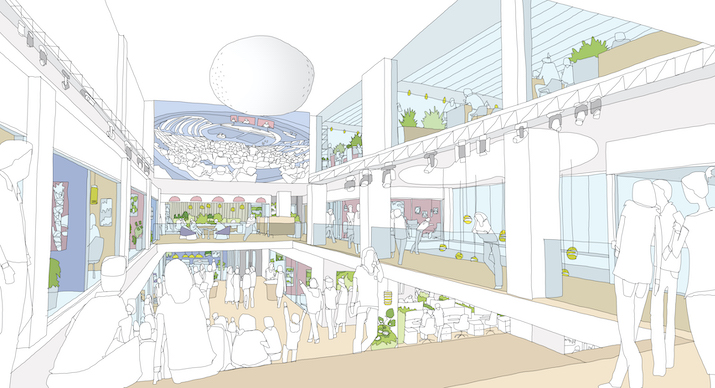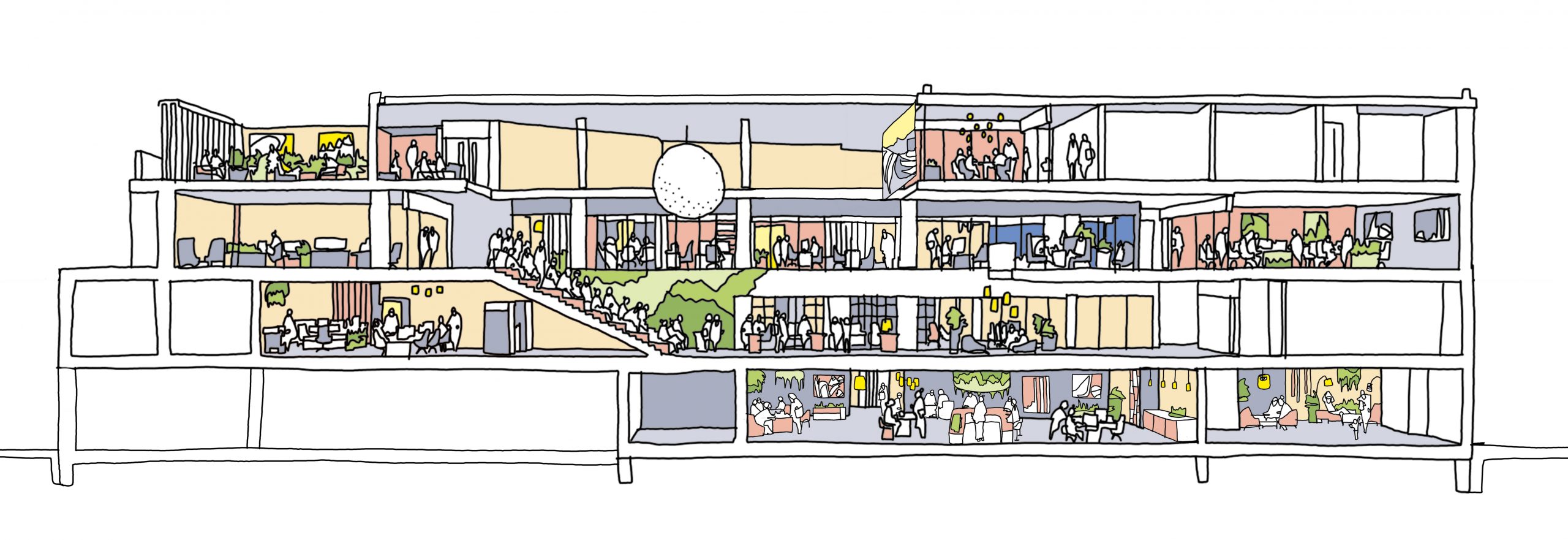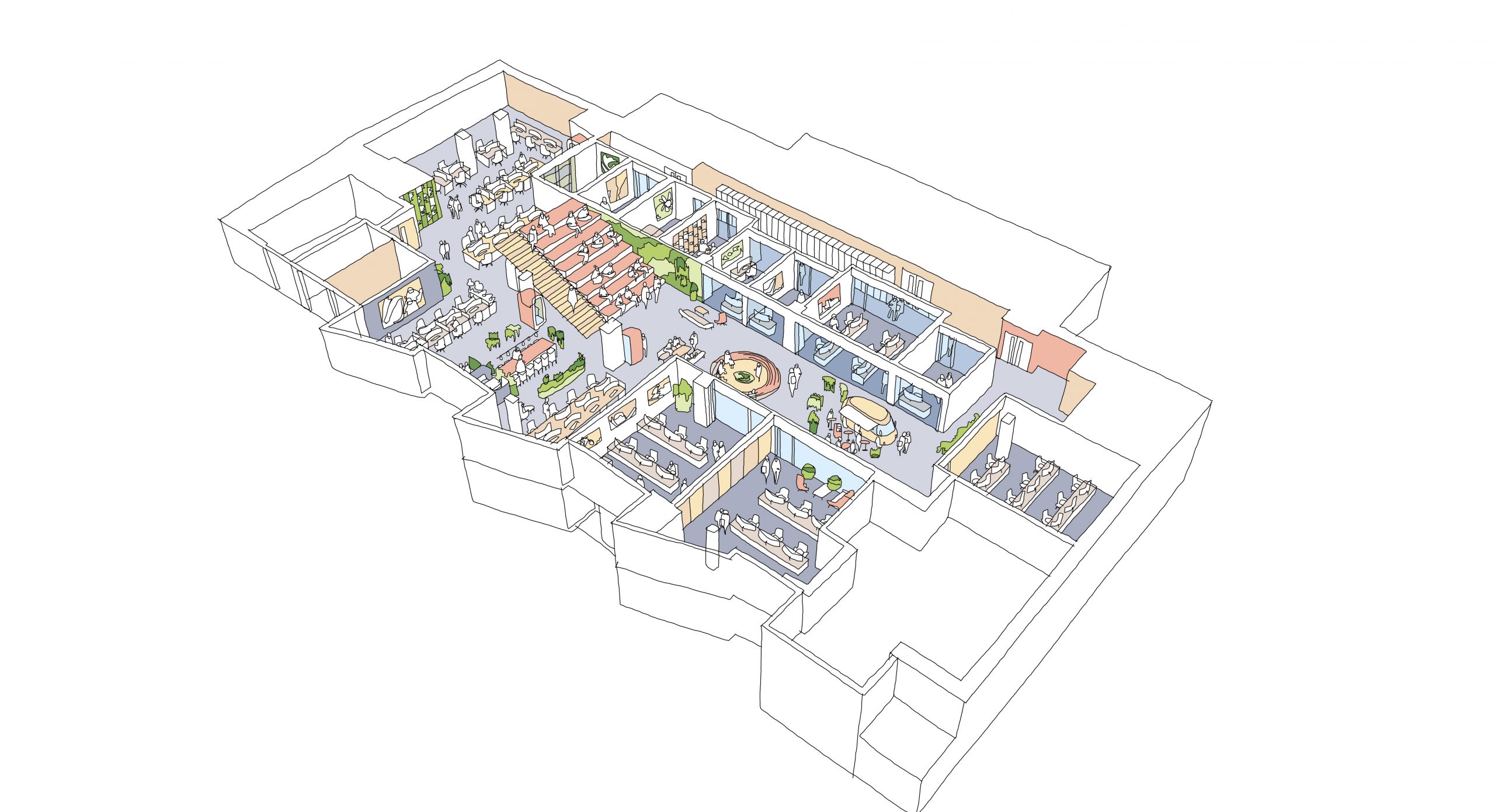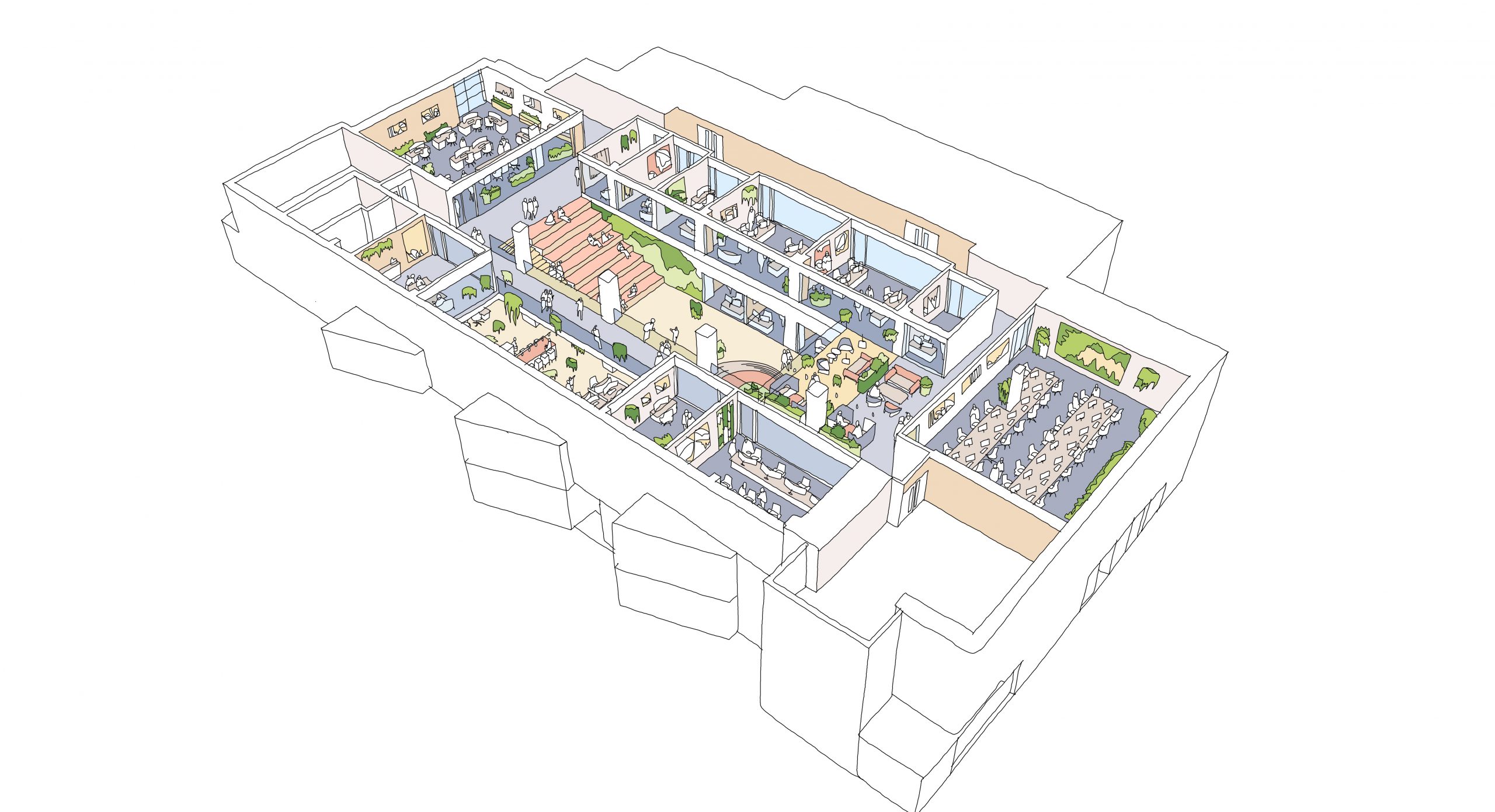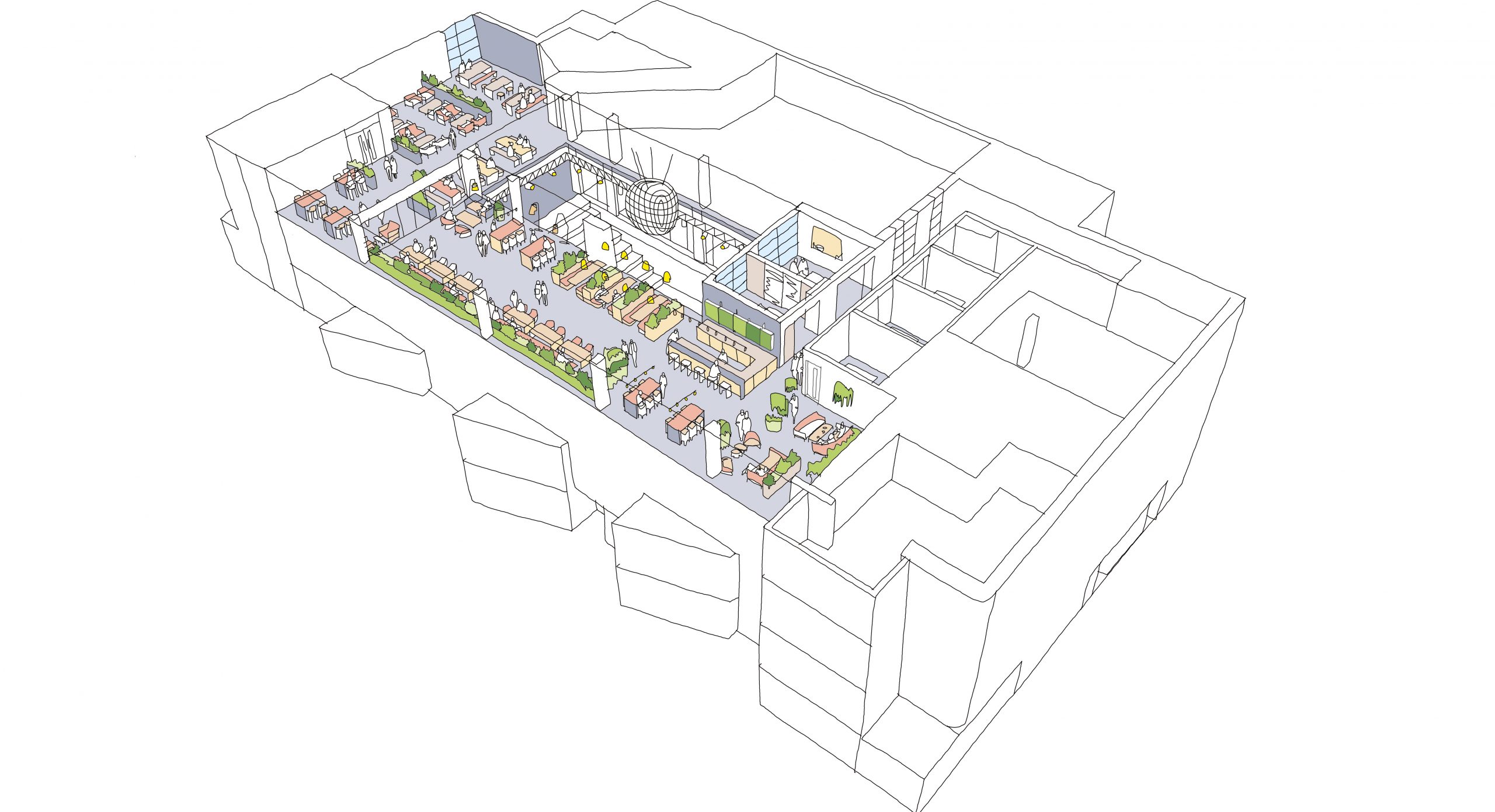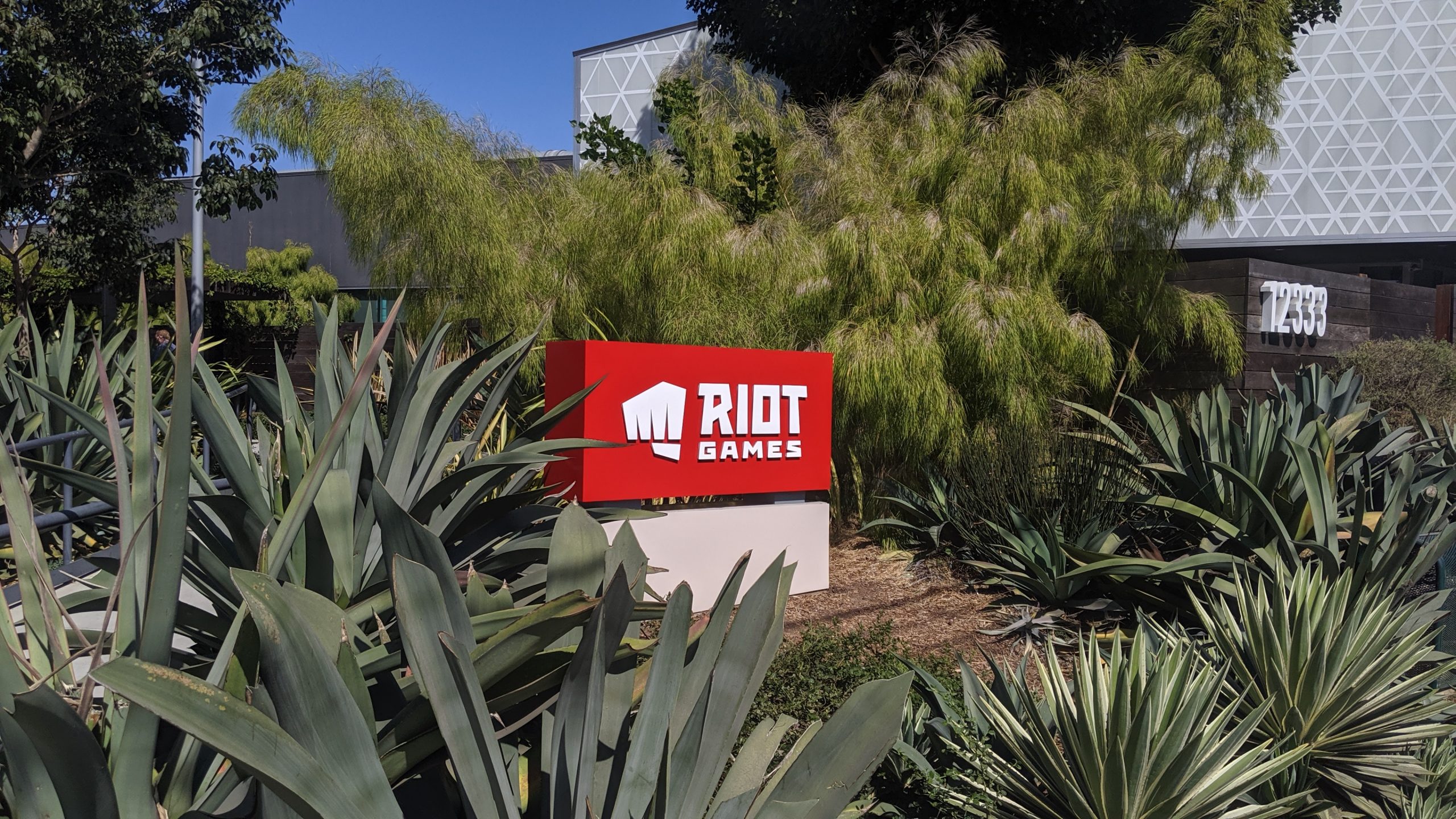Riot Games Takes Esports Production Global With ‘Project Stryker’ Remote Broadcast Centers in Dublin, Seattle, APAC
Regional teams across the world will be able to access the technology from their home base
Story Highlights
For more than a decade, Riot Games Esports has helped blaze the trail when it comes to remote-production workflows and centralized-production models. Now Riot is taking it to the next level with plans to launch three remote broadcast centers (RBCs) strategically located around the world to create a “chase-the-sun” broadcast-operations model. The first of these three facilities is set to open this year in Dublin, followed by one in the Seattle area in 2022 and an undetermined APAC location soon after.
Dubbed “Project Stryker,” the new centralized-production model is the result of years of planning and thousands of hours of R&D by Riot and its Esports Technology Group. With Riot Games expanding its slate of esports events and global footprint in recent years, this new model will allow its esports-production teams across the planet to create more content while also boosting quality and cost-efficiency.
“We knew we were going from a single-game esports company to a multigame future and there were going to be production challenges because what was built over the last 10 years wasn’t going to carry us through the next 10,” says Scott Adametz, senior manager, infrastructure engineering, Riot Games. “We saw a freight train coming in terms of the amount of production that we would need to do, and we saw remote and centralized production as the best way to confront that.”
The Stryker Concept: 24-Hour Esports-Production Operation Spanning the Globe
In addition to providing a central production facility featuring multiple studios and control rooms for large international events, Project Stryker will also enable regional production teams across the world to tap into remote broadcast centers via control panels at their home bases, opening up state-of-the-art technology to even small regional events.
“We are centralizing all of our technology into production centers so that we can have the best equipment, skilled labor, talent, and techniques possible and then create a follow-the-sun operations model,” Adametz explains. “We’ve also tapped into remote production so that, even though the gear is centralized at these facilities, the operators can be anywhere around the world. The facility, technology, and architecture support both modes simultaneously.”
Powered by the dedicated Riot Direct internet backbone, this trio of remote broadcast centers in Dublin, Seattle, and Asia will be located exactly eight hours apart. This will allow Riot to produce live content and provide support to anywhere in the world at any time of day, regardless of where the event is taking place.
“Dublin’s location satisfies the strategic goal for coverage around UTC time zone.,” Adametz notes, “and then we’ll add locations at plus-eight and minus-eight. Each facility will work a full shift and then shut down and throw control for the next productions to the next facility. We’re not picking one facility and putting all our eggs in one basket, nor are we trying to have 20 facilities like we do today in regional esports, because we can’t guarantee consistency, standardization, or efficiency.”
In Dublin’s Fair City: First Stryker Remote Broadcast Center Nears Completion
First up on the Project Stryker roadmap is the facility in Dublin, which is already about 75% complete, according to Riot Games’ Allyson Gormley, General Manager, Stryker.
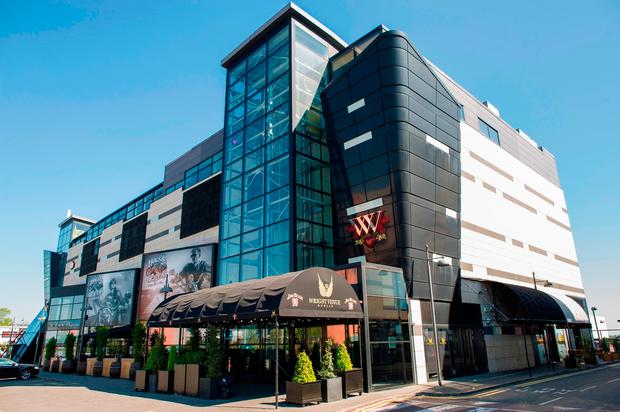
Riot Games is taking over the 50,000-sq.-ft. building that was previously the Wright Venue, a well-known Dublin nightclub.
The 50,000-sq.-ft. building was previously the Wright Venue, a well-known Dublin nightclub located in Airside Retail Park in Swords that boasted the largest disco ball in Europe. Riot is transforming this unique space into its European Remote Broadcast Center — complete with six insert stages; six production-control rooms; six audio-control rooms; multiple bullpens for observers (in-game camera operators), graphics, replay, and editing; and a number of large collaborative spaces. And, of course, the disco ball.
“The building has a large atrium dance-floor space and several tiers that are wrapped around that space,” says Gormley. “That creates a very natural environment for control rooms on both sides of the atrium looking down. Where there are double- and triple-height spaces, we’ve left them flexible to allow us to do further projects as necessary.”
In addition to the Stryker production facility itself, Riot has erected a dedicated data center nearby to house the infrastructure and equipment supporting the RBC.
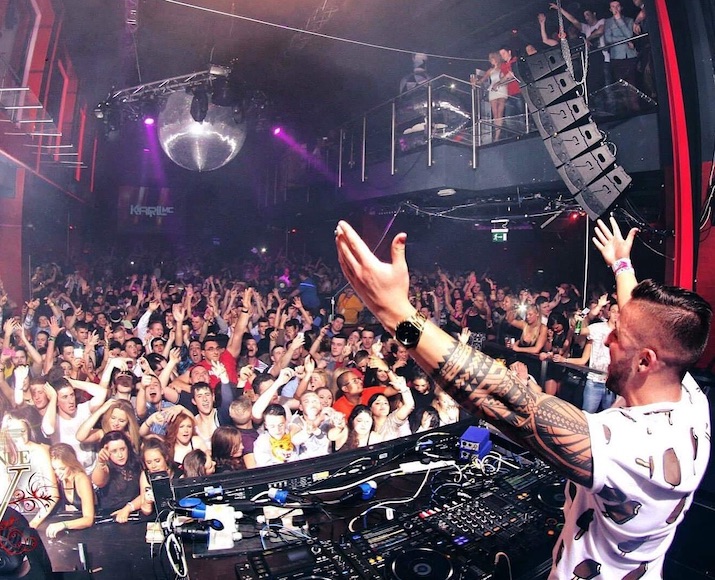
The Wright Venue boasted the largest disco ball in Europe — an element that will remain as part of Riot’s Stryker Remote Broadcast Center in Dublin.
The Dublin facility will be capable of producing six concurrent live streams at any given time. At peak capacity, when all six production pods (studio/PCR/ACR) are live on a show day, roughly 150 crew members could be working inside the facility. Riot Games have partnered with NEP Ireland to provide technical production staffing and support at the facility, which will create 120+ jobs across broadcast engineering, production, control crew, and event production.
“It’s a gradual ramp-up,” says Gormley, “and it’s safe to say that, by our first massive event of next year [the League of Legends Mid-Season Invitational (MSI)], we will be operating Stryker at [full capacity]. Physically, the build will be largely finished by the end of this year, and we are now hiring staff. Jobs will be posted on on the Riot Games careers page] as well as the NEP career page soon and we would love the best and brightest to come help us bring this facility to life.”
End-to-End IP Facility: ‘Hardly Any SDI Cable Whatsoever’
Riot worked with systems integrator NTC (National Teleconsultants) to create the fully IP-based facility in Dublin. Built on SMPTE ST 2110 standards with heavy use of JPEG-XS compression, the Dublin RBC provides Riot the flexibility for future expansion and next-gen technologies.
“There is hardly any SDI cable whatsoever,” says Adametz. “Until now, you would always build a 2110 facility and then end up with a lot of SDI. But not here.
“We were able to make sure that that happened,” he continues, “by taking all the broadcast equipment that would normally be in your central equipment room and putting it in an actual data center separated from the building. We found that, when you build everything in one facility, you take shortcuts, thinking, ‘I could figure out how to do this purely over IP, or I could just run an SDI cable to make it work.’ But you can’t run an SDI cable to our Dublin data center. Everything has to be connected via IP because there is no other option.”
According to Adametz, this pure-IP strategy will pay dividends immediately on launch because it will allow regions from around the world to access the facility’s production capacity via the data center at any time — even when on-premises operations are shut down for the day.
“Say you need six graphic engines for a show and those are sitting unused because Europe’s asleep,” he explains. “You can still borrow them for your production because they live in a data center.”
Riot standardized on Cisco IP Fabric for Media for the entire network stack after proving out the workflow during MSI in Iceland earlier this year. The company has engineered an entirely routed network that does not rely on multicast in the same way that a traditional broadcast facility based on ST 2110 would typically have.
In terms of key equipment, PCRs are outfitted with Grass Valley K-Frame production switchers, and ACRs are outfitted with a mix of Calrec Artemis and Calrec Type R audio consoles. Riedel Communications has been awarded the intercom contract and will provide a unified intercom system connecting all Riot esports facilities and regional centers around the world. Multiviewers are powered by Cisco UCS server hardware and TAG VS software.
On the replay side, the Dublin facility is equipped with EVS XT VIA production servers, and Riot plans to bring in EVS software-defined solutions where appropriate. Insert stages will be used primarily for remote casting rather than full-fledged esports tournaments and, as a result, will largely be outfitted with PTZ cameras rather than studio cameras.
Bringing in the Regions: Stryker To Connect Esports Outfits Around the Globe
In addition to crews’ producing content from the RBC facility itself, the technological infrastructure can be leveraged by Riot regions at any given moment. Using “On Ramps,” the RBC can pick up audio, video, and comms sources from the region, bring them back to one of the Stryker data centers, and allow regions to control that equipment remotely and send back the return feeds for distribution.
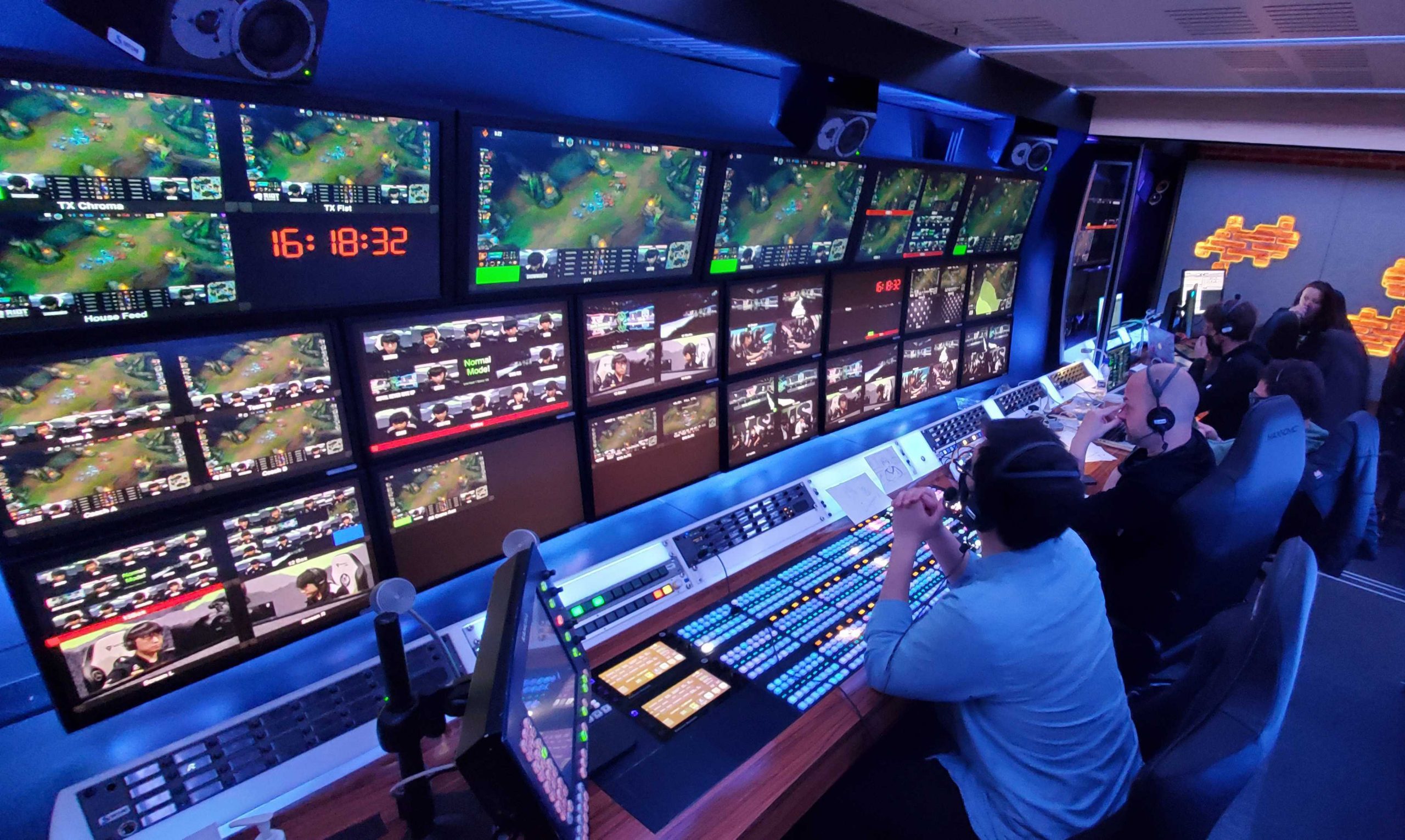
Riot Games Esports has long been a leader in remote-production workflows, including at the LoL Mid-Season Invitational in June, where the production team was in Reykjavik, while feeds were integrated into the broadcast from Iceland, L.A., and Berlin.
“It’s a clearinghouse of sorts,” says Adametz. “Think of it as if we are building our own private cloud for production resources that can be rented by any region at any time. And then, when they’re done, those resources are returned to the pool.
“We can also carve up the [facility] and do multiple remote shows at the same time,” he continues. “We’ve standardized on gear that allows us to carve up the resources and then divvy them out to remote regions. A region could be doing an additional remote show at the same time that all six physical control rooms are fully populated.”
Riot is using JPEG XS for multiviews to bridge the gap between the data center and the production facilities. In addition, with JPEG XS, it can treat its RBC control rooms just as it would treat a regional control room, creating almost unlimited flexibility.
In Iceland during the MSI, Riot completed successful tests in which a switcher panel was in Reykjavik and the switcher frame was in Los Angeles, with signals transported via JPEG-XS at subsecond latency. This model is being replicated for Project Stryker, which will allow regions around the world to build what Adametz calls “lite” control rooms consisting solely of operator panels or interface devices, rather than expensive and complex hardware.
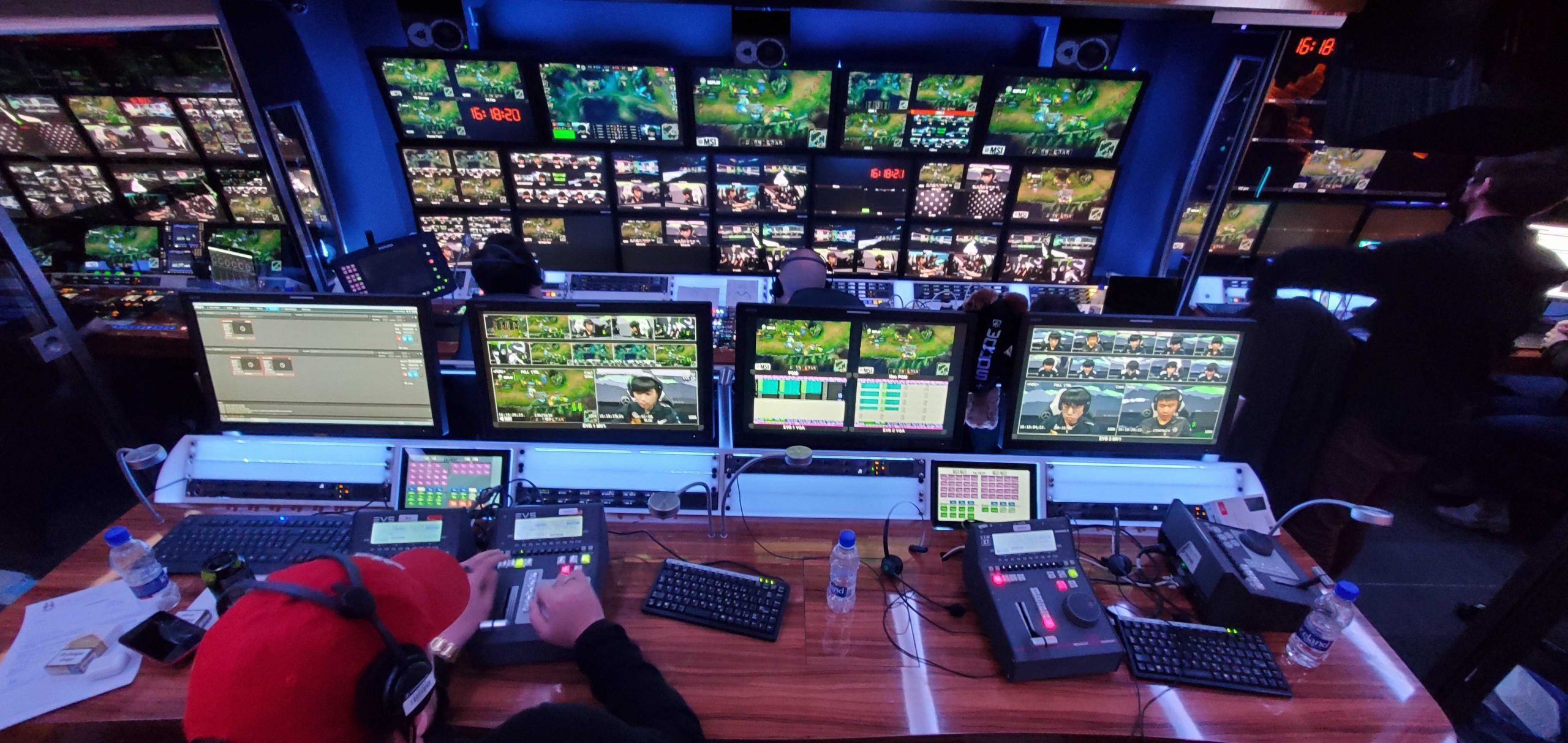
Engineers and production team seen here in Reykjavik watching a multiview of the 2021 LoL Mid-Season Invitational in the broadcast truck, with sources coming from Riot Games’ Los Angeles and Berlin studios.
“They will still be able to produce locally,” he says, “but we just allow them the capacity to do a whole lot more without a significant capital investment or technical complexity. We’re bringing that complexity into the [RBC] and doing it once on a common backbone riding the Riot Direct network. They shouldn’t have to tank all the complexity at the edge; we can handle that and then just give them access to the tools.”
The Stryker model will also help streamline the extensive multilanguage versioning required to distribute Riot esports broadcasts around the world. Currently, to serve its various markets, Riot manually creates 19 versions of the world feed featuring different languages.
“What if each of those 19 languages had a dedicated control room that they could use to produce their own version of the show using the same raw sources?” posits Adametz. “Today, they get a world feed, but what if we didn’t give them a preproduced world feed and let them make their own show for their own audiences? That’s where we think this is headed, especially for big events like the [League of Legends World Championships].”
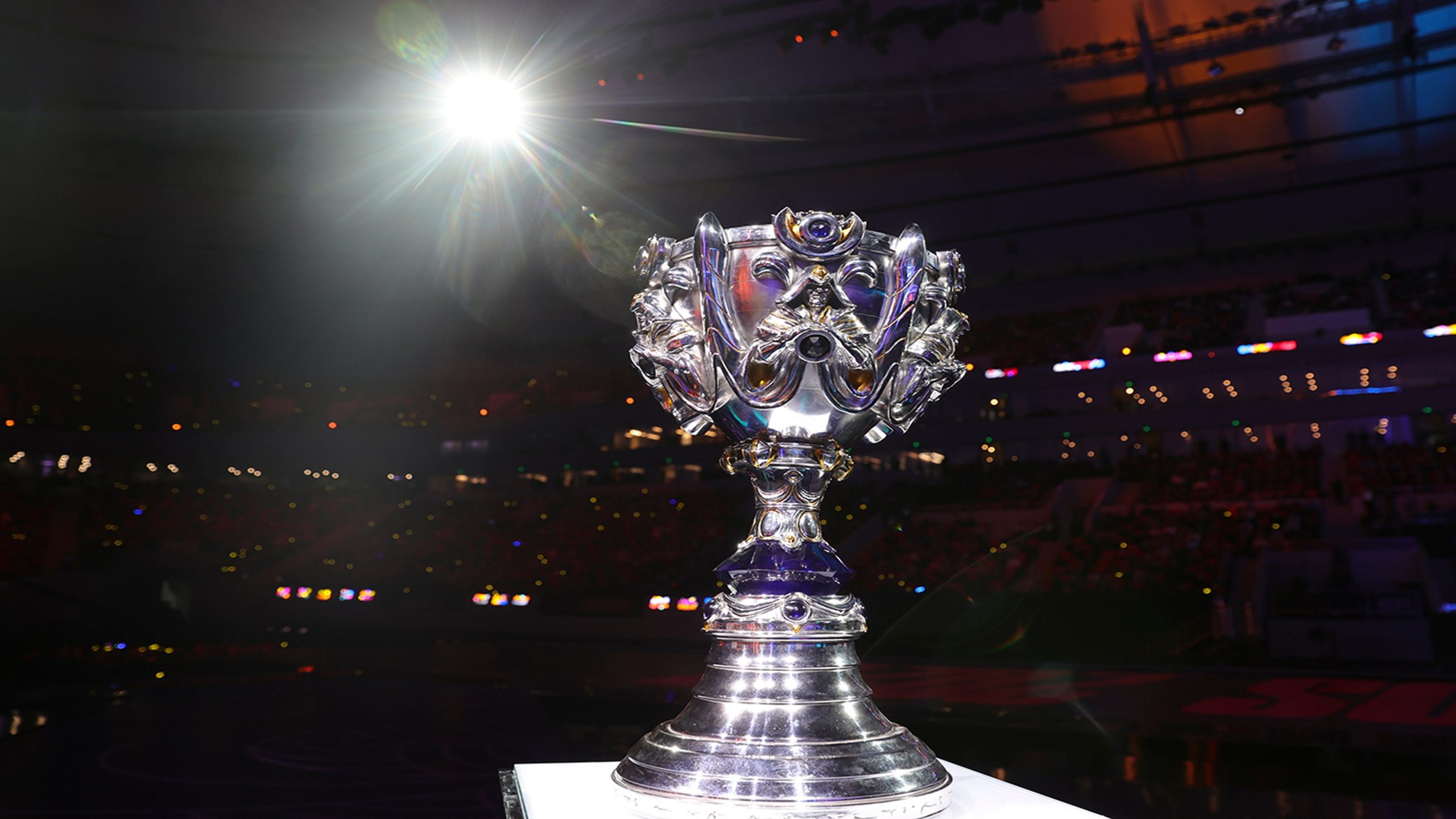
Riot Games is currently producing the League of Legends World Championships in Iceland. Upcoming Stryker facilities are expected to play a major role in future high-profile productions like Worlds.
Adametz, who played key roles in development of groundbreaking centralized production facilities for BTN and Pac-12 Networks, sees Project Stryker as the natural next step in the evolution of remote production.
“Any technical project we do,” he notes, “we crawl before we walk, and we walk before we run. I would say BTN was the crawl because it was so early. Pac-12 was the walk and seeing how to do this on a national level. And this is run because we’re now doing it internationally. To me, this is just a natural progression of the technology. It doesn’t feel any different, but it’s definitely bigger in scope and scale. It’s a lot of hard work and stress for the entire team, but I’m extremely confident it will pay off.”
A Labor of Love: Pulling Off Stryker Amid a Pandemic
Building a state-of-the art facility as part of a three-facility global project is a colossal undertaking under any circumstances, let alone during a pandemic. However, Gormley credits the Riot team in Ireland and around the globe for staying focused on getting the job done.
“Pulling it off in a pandemic means a whole new level of challenges,” she says. “We’re lucky here in Ireland that we had a lot of support and everyone understood what we were trying to build. Our goal was to have [the facility] stood up by the end of this year, which was ambitious especially during a pandemic.
“It definitely has been a very large team effort,” she continues, “and we’ve had support across Riot from regions to executives all the way up to [Riot Global Head of Esports] John Needham. Once they understood it and what it offers Riot for the next 10 years of esports, they were fully onboard.”
Adametz seconds the sentiment, citing the trust that Riot Games upper management offered for the project despite the often bleeding-edge technology and complex workflows it entailed.
“This was a big ask,” he says. “We did our best to explain it, but, unless you’re in this industry, it’s very difficult to understand remote production, centralized operations, and IP technologies. There were a lot of leaps of faith. But I think it speaks to the culture at Riot: we push ourselves further than we are comfortable because, when you get into that discomfort, new, exciting things happen. We have a one singular mission: we are trying to bring joy to billions — with a B — of fans around the world. We think this gets us closer to that goal.”
For those interested in applying for positions at the soon-to-launch Stryker facility in Dublin, stay tuned to the Riot Games Career Page as positions will be posted in the coming weeks and months.
